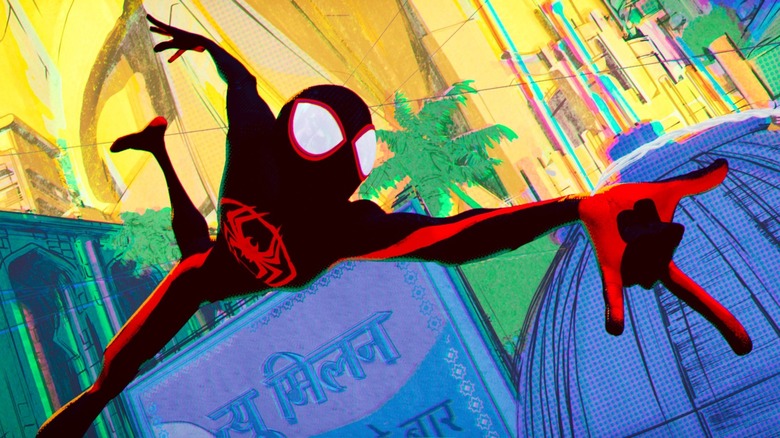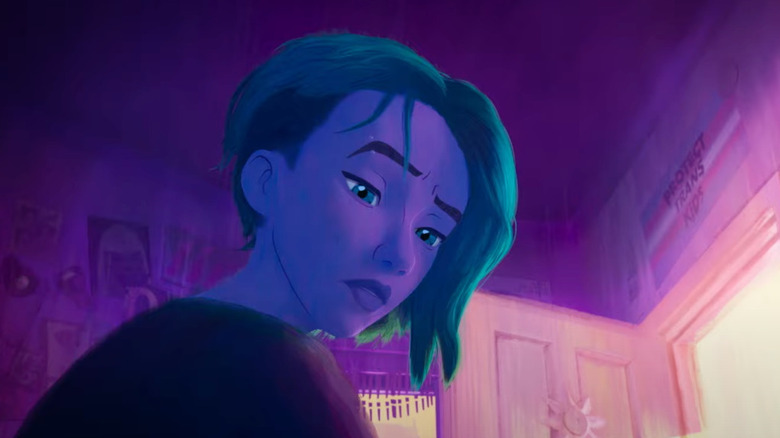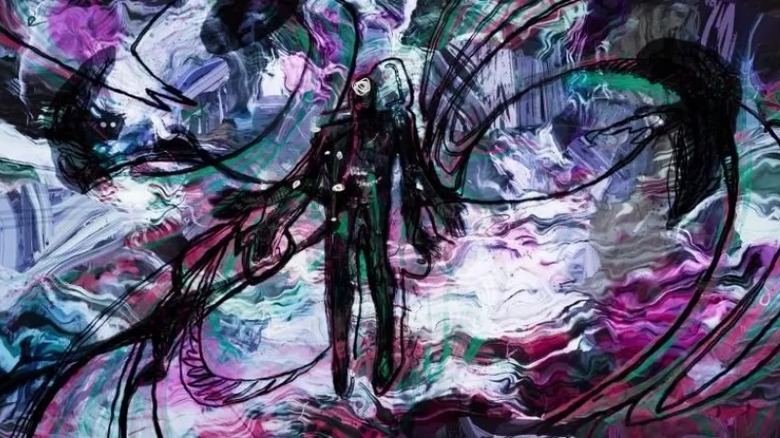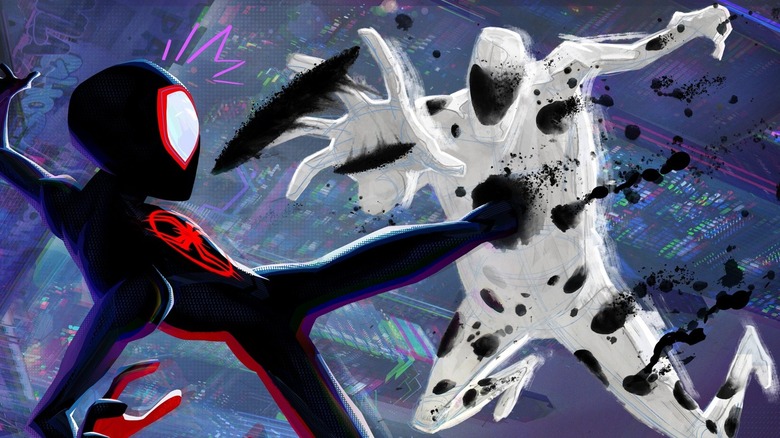Spider-Man: Across The Spider-Verse's Stunning Animation Breaks The Brain - But In A Good Way
"Spider-Man: Across the Spider-Verse" had big shoes and expectations to fill. The sequel is coming after an Oscar win and a revolution in Hollywood studio animation that has inspired experimentation in every major studio. And yet, the movie not only exceeded expectations but also crushes them. This is a grand achievement in myth building and deconstruction, with the film pulling not an "Empire Strikes Back" but a "Matrix Reloaded," interrogating the idea and tropes of the hero, while continuing Miles' poignant coming-of-age story.
Unsurprisingly, the film is gorgeous. It is easy to take that for granted but to see it with your own eyes defies description and expectations. Like the first film, it breaks apart the rules of animation to challenge the entire medium, but "Across the Spider-Verse" goes beyond, breaking film itself like it's the second coming of Chuck Jones and Michael Maltese's "Duck Amuck." The result is a movie that looks like this generation's "Toy Story" or "Snow White," a true monumental film that marks a new era, and one that breaks your brain, in the best possible way.
Heavy spoilers to follow.
Brand new worlds
For starters, there are multiple universes explored in the film, each with its own unique style, color palette, and design that breaks molds for what we consider possible in animation. Take Gwen's world, which is inspired by the Jason Latour and Robbi Rodriguez comics and made to resemble a mood ring, the textures softer, but changing dynamically according to how Gwen is feeling in every scene. This universe has a painterly look with a watercolor palette that matches the character's emotions in a stunning way. It is the first world we see, and already paints a picture of what kind of movie this is going to be, one that doesn't conform to just showing us beautiful images, but pushes what is possible in the medium. Mumbattan, where Spider-Man India lives, is a highlight of the movie, a marvel of design, while Nueva York brings the images down to basics, leaving traces of early sketches in the frame, as well as comic book drawing paper lines and notes.
What's more, each world completely reinvents physics and visuals for how things work, like an explosion or a source of light in Gwen's world working differently than in Nueva York, the shadows cast by the fire reflecting differently in each universe. This helps sell the idea that these are not just visual styles that are different, but universes themselves, something no other multiverse film has come close to achieving.
Menacing threats
It's not just in the worlds themselves where the animation team shines, it is also in the characters — of which there are hundreds. One of the joys of "Into the Spider-Verse" was seeing characters with vastly different designs and animation styles coexist together in the same frame, and the new movie doubles down on it. There's Spider-Punk, who looks like moving newspaper cut-outs, illustrating his disregard for authority and rules, or the new da Vinci-inspired Vulture who is made of sepia-toned paper and makes him look like a true multiversal anomaly, something out of this world. Then there's The Spot, who quickly grows from a joke into a formidable and scary villain, not just in terms of character, but visually.
When we first meet the Spot, he starts out as a rough drawing, but as he gains power and confidence, the spots in his body seemingly gain a life of their own, behaving differently. By the time he is fully in control of his powers, he looks like a completely different person, with the lighting and composition, as well as the FX for the spots creating one of the most visually striking comic book villains ever. In an interview with VFX Voice, FX Supervisor Pav Grochola said, "The Spot is made of paint, ink, and moves around leaving ink droplets; he is himself constantly redrawn with natural media."
A miracle of animation
Then there's the icing on the cake, the ace up the sleeve of "Across the Spider-Verse" — it is also a film that combines mediums and gives us the best animation/live-action hybrid since "Who Framed Roger Rabbit."
Granted, these are essentially just two, very short scenes, but they are so seamless, so powerful and imaginative that it is hard to wrap your head around them. We first see this when The Spot unlocks his potential to travel the multiverse and goes to a universe that's literally a 2D comic book, specifically one that looks like Amazing Fantasy comics where Spider-Man first appeared. Then, he visits a world entirely made of Lego, and more importantly, he accidentally opens a portal to the universe of the "Venom" movies and comes face to face with Peggy Lu's Mrs. Chen.
Throughout the movie, we get several flashes to live-action "Spider-Man" movies, illustrating what Miguel O'Hara calls "canon events" in the life of Spider-Man, but those are mostly scenes from previous movies played on floating screens, not interacting with the characters. But when Spot sees Mrs. Chen, or later on when Miles meets Donald Glover's Prowler, they interact and talk as organically a part of the same frame as Bob Hoskins grabbing Roger Rabbit by the throat and kicking him out of his apartment.
It is one of the biggest surprises of the film. To have animated characters interact with live-action ones, and for it to look this seamless is nothing short of a brain-breaking miracle.



